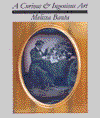A Curious and Ingenious Art
“Banta’s study saves daguerreotypy from being tossed of as an archival curio by keeping her project relatively simple and steering clear of convoluted aesthetics. She refrains from alienating the reader by refusing to participate in the shop-talk that all too often accompanies artistic discussions.”—Nicole Duclos, Rain Taxi
“Banta is highly effective in relating the daguerreotype process to the interests and social positions of those in the pictures, including Oliver Wendell Holmes, James McNeill Whistler, Henry James, and Harriet Beecher Stoowe… Highly recommended for academic history of photography collections.”—Eric Lindermann, Library Journal
“A true bringing to light, this book presents dazzling first photographs, which reflect and illuminate both our past and present. Melissa Banta's text greatly assists the process of understanding the meaning and value of these items in Harvard's 'cabinet of curiosities.'”—Grant Romer, George Eastman House
Around the time Louis Jacques Mandé Daguerre perfected his method for fixing images on polished metal plates in 1839, Harvard was emerging as a modern research institution. Accordingly, the college began amassing vast collections for teaching and research. Among these collections in the university's libraries, museums, archives, and academic departments are some of the earliest photographic documents of American life: daguerreotypes.
A Curious and Ingenious Art brings together a representative sampling of Harvard's internationally significant but relatively unknown collection of daguerreotypes. Many of these images were made for, by, and of members of the university's community and have been in its holdings for more than 150 years. The collection includes the work of some of America's pioneering daguerreotypists, such as Mathew Brady, Southworth and Hawes, and John Adams Whipple. Most notably, the Harvard collection preserved for posterity such faces of the era as Oliver Wendell Holmes, Ralph Waldo Emerson, Harriet Beecher Stowe, Henry James, James McNeill Whistler, Dorothea Dix, Jenny Lind, and even Tom Thumb.
The university also seized upon photography as a tool of scientific research, stunningly exemplified in one of the first detailed daguerreotypes of the moon taken in 1851 as well as in images capturing the emergence of modern anesthesia. An unfortunate misuse of photography is recalled in the now famous slave daguerreotypes commissioned by natural historian Louis Agassiz, who believed in the theory of separate human species.
The Harvard collection represents the early history of photography and its social meaning. The accompanying essays explore the personal, telling histories behind the images, stories that unveil the reflections of individuals who searched for purpose and promise in the new medium.




